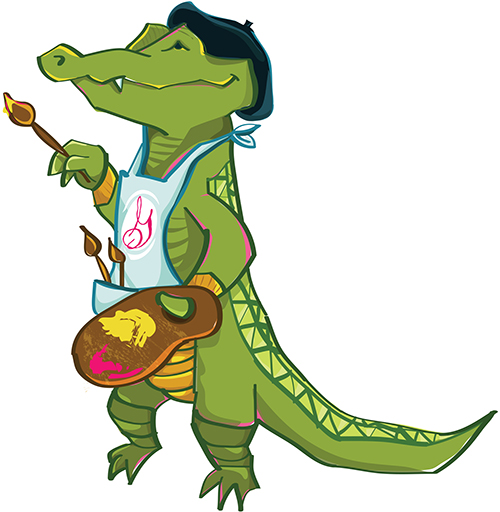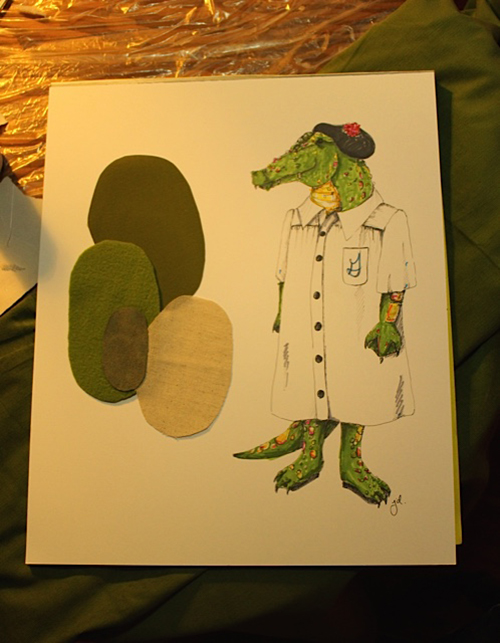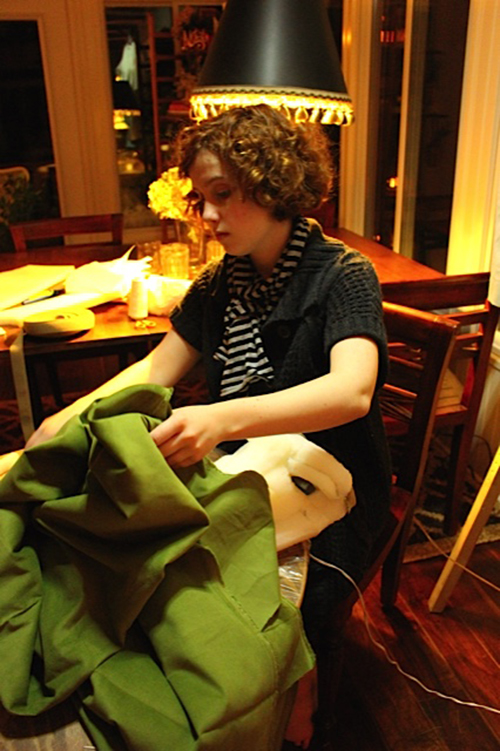
Art education for children is a fundamental component of the Gibbes Museum of Art. Throughout the year we offer a variety of programs to students of all ages in school and at locations throughout the tri county area. When we reopen in the spring of 2016, the first floor of the museum will be dedicated to classroom space for children and adults. A year ago, Rebecca Sailor, curator of education, introduced the idea of creating a museum mascot. Rebecca felt it was important to have a visual symbol of the museum that could engage and interact with children and families inside and outside of the museum. We began brainstorming with Erin Banks, our graphic designer, and came up with the concept for the Gibbes Gator. We launched the Gator in our summer camp brochure and have been using him on all marketing materials related to children’s programming. Our next step was to reach out to Charleston County School of the Arts visual arts teacher Marie Nichols to ask if her students would be interested in bringing our Gator to life. We wanted a life sized gator who could interact with children at events and eventually, in the museum during school tours, classes, and camp sessions. Marie immediately said yes, and recommended sophomore costume design student Julia Dotson. We met with Julia in September and she agreed to take on the project of building our mascot. We spoke to Julia recently and asked her to give us a glimpse into this exciting project.
When did you become interested in creating art? Or, when did you realize you had a talent for art?
Well, I have been creating ever since I could remember. One of the first toys that my mom ever gave me was a plain black marker and one of those ginormous packs of computer paper. And even when I was small, I remember accumulating inspiration from PBS shows that had something to do with creating, even if it was something like Bob the Builder or a tutorial on how to make Aladdin’s magic carpet out of strips of paper. And I guess I realized I was entirely infatuated with creation was when I decided to try out for the School of the Arts and finally took art lessons— besides the ones offered by the South Carolina public school system. But I never realized that I had a talent until someone like the Gibbes Museum came to ask for a commission!
How long have you been a student at SOA?
I have now attended School of the Arts since the sixth grade, which would be over four years.
Costume design is a new major at SOA, can you tell me more about this major and what it entails? Do you see this as something you will continue to pursue at the college level?
Currently, each costume design student is learning the foundations of sewing and garment making, such as learning to sew a zipper or the daunting, yet exhilarating task of pattern making. And as the year goes by, I believe that we will learn more comprehensive things, for instance, making an entire garment from pattern to embellishments (which sounds easy, but is actually a very difficult task).
The field of costume design currently is one the interests that I have in mind for a college major, my choice, however, still weighs between this, fashion design, and the fine arts.

What was your reaction when we presented the Gibbes Gator project to you? Did this project seem overwhelming?
I was initially honored and trilled to make something for the only art museum in all of Charleston. This is a place I went when I was just six years old and gazed at monumental paintings. And at the time I was offered the commission, it did not appear to be overwhelming, but when I actually started to work on the project I realized that I’d underestimated the amount of attention one costume needs. The actual carving of the foam for each body part proved not as the most troublesome, but actually finding the materials turned out to be the most difficult part. I wanted to capture the ‘chummy’ quality of the drawing that I was presented with (designed by Erin Banks, Gibbes graphic designer), and found that faux lime green upholstery alligator leather would not do the job. After about a month of searching for the perfect, child-friendly material, I finally found the perfect pea green corduroy.
This is something that you are working on outside of school, how are you finding the time?
I genuinely enjoy sitting at home with Edith Piaf music or the television show Twin Peaks in the background while I attempt to create an alligator out of foam and green corduroy pants!

Tell me about the process of designing the Gibbes Gator.
Like most of my sculptures ‘Gibbes the Gator’ consists of paper mache and malleable fabric, but this is my first experience carving foam, which I found not as pleasurable as sculpting strips of paper together. But as a mentioned before, trying to find green corduroy in Charleston was a very difficult thing!
The smock that makes up approximately half of the note garment is just a thin canvas material that is standard for most artist smocks. That’s why I wanted to keep the entire garment to a certain style, which was The Wind in the Willows. I first saw this production in California, and was inspired by Wes Anderson’s Fantastic Mr. Fox (hence the abundant use of corduroy). This led to the look I wanted for the Gator, which is almost like a man magically made into an alligator that can sing and dance. It’s as if the whole world is a musical!
What has been the most rewarding and the most frustrating aspects of this project?
To be honest, the most exasperating part of this project was finding the materials, and then having to redesign over and over again to accommodate for abilities and resources that were available. Yet, the idea that I am making an entire costume that other people will enjoy is a catalyst to keep working to finish this protracted task!
We are so grateful to the School of the Arts and to Julia for agreeing to take on this challenge! If you are interested in donating to this project, please visit Rally.org or contact Rebecca Sailor at 722.2706 x41 or [email protected].
—Amy Mercer, Marketing and Communications Manager
Published November 25, 2014

